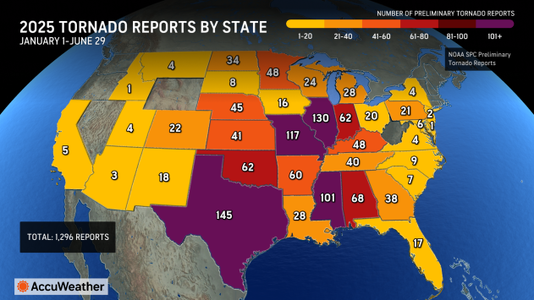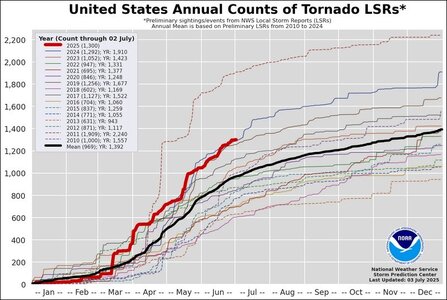Randy Zipser
EF4
Thanks, Mike.
I don't think the above is the paper I was referring to. I clearly remember that paper containing a figure showing a circular area centered over NE AR, maybe a few hundred miles in diameter, with a radial axis (I think it was oriented NE or SE?, or at any rate, away from OK), hence my jocular reference. According to this hypothesis, whichever "direction" the radius was oriented was where tornadoes were "expected" to be concentrated for some period of time (which I do not recall). Also, over time, this radius would change direction based upon "current" data. In addition, I recall that Dr. Fujita was the sole author, or at least lead author along with one or more of his grad students (e.g., Forbes, Umenhoffer, Pearl, etc.)...so it was an in-house U of Chicago publication, if memory serves. I'd love to find and read a full copy of this paper again, for old-times sake.
BTW, I did an aerial damage survey of the Ash Valley (Great bend), KS, tornado in August, 1974, with Umenhoffer and I worked with Ed Pearl in Beltsville, MD, under Col. Robert C. Miller, USAF-Ret., as a severe-storm researcher in 1976. I also recall Dr. Joe Golden, Dan Purcell, and I doing an aerial damage survey with Dr. Fujita, but don't recall whether it was Ash Valley. Dr. Fujita and his students were very active during that period, and cranked out numerous papers (BAMS, JAS, JAM, MWR, Weatherwise, AMS Conference preprints, etc.).


![Tornado Annual Occurrences 1915-1985 [T. Fujita, 1987].jpg](/data/attachments/44/44831-d4399ef2bba91f0dff56e0629d255af9.jpg?hash=R6q4bApmum)
